Defining Endorsement Marketing and a guide to when / how to use endorsements to build your brand.
Endorsements are a large part of marketing. Purportedly 28% of Nike’s enormous marketing budget goes to athletes to secure their endorsements. We see famous faces on the ads and packaging from everything from bed sheets to cereal. And now, social media and influencers have taken it to another level; Kim Kardashian gets paid $250,000 per photo endorsing a product on her Instagram account.
But marketers and endorsers often fail to truly understand the concept of endorsement. Most do not know how to use endorsements effectively and legally. They don’t know the nature and ethics around paying influential people to steer their fans to a product or service.
So let’s back up and start from the basics.
What is an endorsement? Often the key element in an advertisement or marketing campaign, a product endorsement is a public declaration from a person or organization in support of a product’s features, quality, benefits, and/or brand.
An endorsement can be either paid or unpaid. When we think of endorsements, most people think about athletes or celebrities paid big bucks to endorse a brand. But the vast majority of endorsements are unpaid.
Five-star product reviews on Amazon or other e-commerce or social media websites are endorsements. An endorsement can also be a positive rating from a certification organization, such as a Top Safety Pick from the IIHS for a vehicle or an AAA rating from Standard & Poors for a bond. Even someone walking down the street wearing a t-shirt with a logo is a type of endorsement!
Soliciting endorsement is an essential tactic for building every brand. Endorsements, either paid or unpaid, need to be part of every brand’s marketing mix.
Endorsed Marketing
We are social creatures. We look at what the people around us are doing to get clues about what we should be doing. We take special notice of people we consider experts or leaders. It is encoded in our biology through evolution.
Given our social nature, it should be no surprise that endorsements are extremely useful tools when marketing a product. People are going to look to friends, experts, and influential people when it comes to what products they choose to buy, what organizations they donate to, or who they vote for. Endorsements are social proof of the usefulness of something or someone.
An endorsement of any public statement that espouses the virtues of a product.
An endorsement is always public, meaning that potentially anyone can hear it. The person endorsing the product cant expect it to be a private statement to be an endorsement. A private comment about a product they think is valuable is called a recommendation.
The distinction between endorsements and private recommendations is critical to keep in mind because people will talk positively about things in private that they may not feel comfortable to in public.
The difference between endorsements and recommendations is especially clear in politics. People will publicly support one candidate or policy, and then say their real views in private or when they vote.
People consider their reputations when they make endorsements. If a client says something in support of your product to you, you cannot publish that as an endorsement on your website, brochure, or advertisement without their expressed consent.
An endorsement is always positive. If it were negative, then it would be a denouncement.
An endorsement can come from either an individual or an organized group of people. For example, Saucony has running shoes that are endorsed by both Parker Stinson, American record-holding runner, (an individual) and the APMA, American Podiatric Medical Association, (an organization).
Individuals that commonly endorse products are:
- Celebrities or Influencers
- Athletes
- Experts
- Media reviewers
- Product Users
Groups that endorse products are:
- Professional Associations
- Safety Boards
- Environmental Agencies
- Non-Government Organizations (NGOs)
Endorsements can be either paid or unpaid.
Unpaid endorsements are pretty simple. People have freedom of speech, so they can say whatever they would like about a product whenever they want, up and until it is libelous.
But paid endorsements have legal requirements for both the advertiser and the endorser. The Federal Trade Commission (FTC) enforces the laws governing paid endorsements.
The regulations seek to limit confusion by the end-user; the FTC wants to ensure that consumers understand that the words of the endorser may be influenced by money and that the endorser doesn’t overstate the benefits of the product or ignore the risks. The endorser also has the same legal requirements that apply to the company if they were marketed directly.
For example, Kim Kardashian-West endorsed pills on Instagram that can help pregnant women with the symptoms of morning sickness. The prescription was called Diclegis from a Canadian pharmaceutical company, Duchesnay. Kim said it helped her out during her pregnancy.
Unfortunately, Kim made some mistakes in the original post that prompted a strongly worded letter from the Federal Drug Association (FDA) to Duchesnay. Her Instagram post should have listed the risks and side effects, just as any advertisement would. She had provided a link for her followers to a page with the side effect, but this was insufficient. She had to amend her post.
Endorsements can be quite powerful. But you need to understand them and the legal requirements to use them effectively. We talk about the legal requirements later in this guide.
Paid Endorsements
Paid endorsements are usually what marketers are referring to when they talk about endorsements.
We think of endorsement deals like Nike signed an agreement with Kevin Durant worth upwards of $300 million. There is money and an exclusive contract involved. The deal is as much to keep the prized influencer from endorsing the competition as is it to secure their endorsement.
But there are other types of paid endorsements. A person can be paid for their endorsement with money, free goods or services, or a combination of both.
Many marketers and public relations professionals generate paid endorsements without ever sending a cheque; they send their products out to reviewers or influential people. This practice is particularly prevalent in the toy industry and the cosmetics industry because the manufacturing cost of the product is quite low relative to the profit to be made if someone with a broad reach endorses the product.
Endorsements that are motivated by free stuff are still considered paid endorsements by the Federal Trade Commission (FTC) and are still under all of the legal requirements for both endorsers and advertisers.
There is an exception. The FTC do not consider it a paid endorsement consumers that choose to write a something positive of their own free will after they have received the free product as part of a sampling program available to all customers.
Celebrity Endorsements
Celebrity endorsements are the cornerstone of endorsements. They should not work logically; why would a celebrity know any better what products you should buy?
But celebrity endorsements are big business. When people see their favorite star endorsing a product, they may take a look at a product they never considered before. Endorsements also build brand associations and the personality of a brand; people naturally assign the confuse of the celebrity spokesperson with the brand they are endorsing.
Examples of Celebrity Endorsements
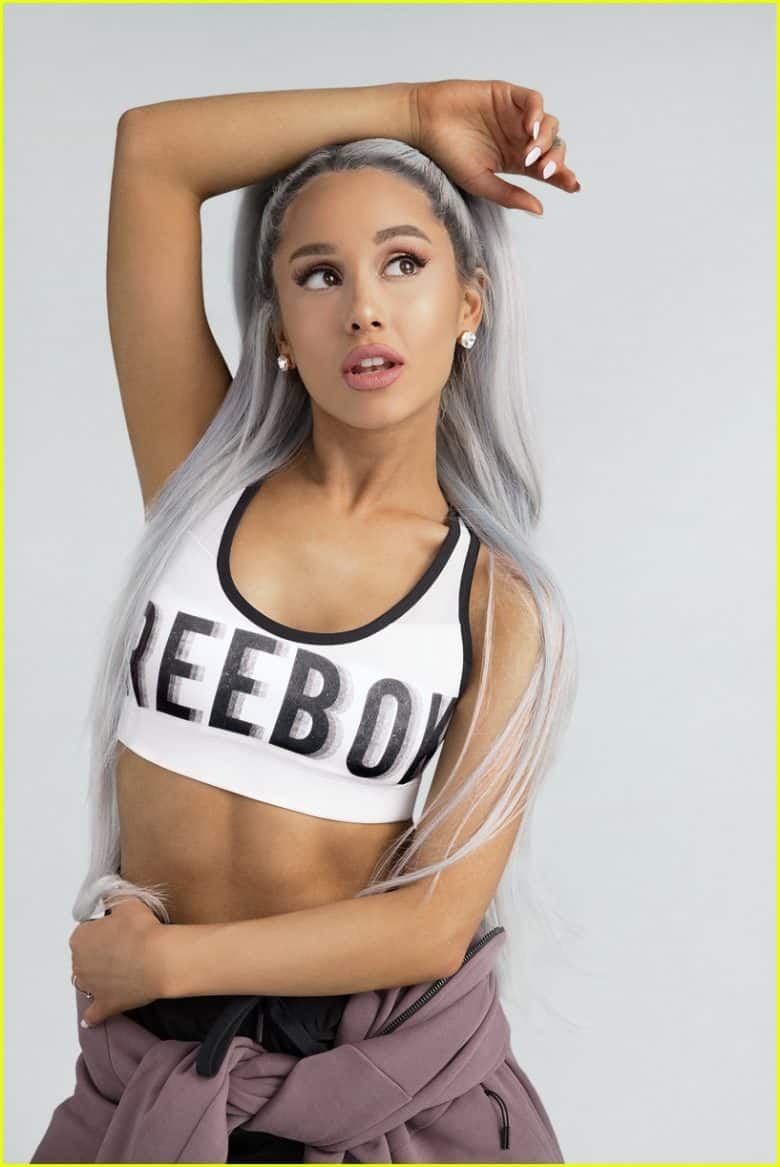
Ariana Grande endorses Reebok 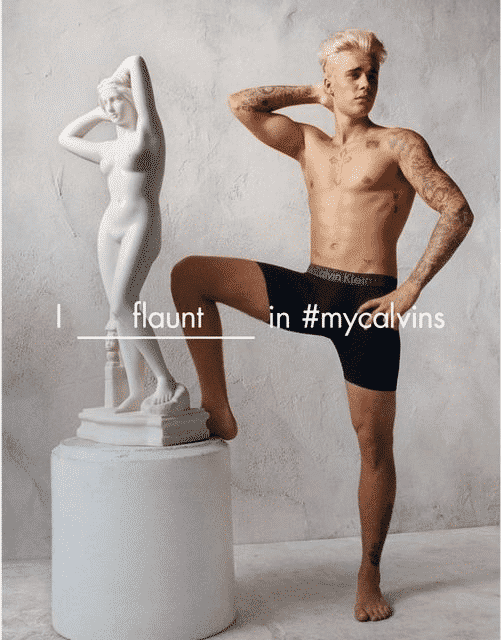
Justin Bieber endorses Calvin Klein 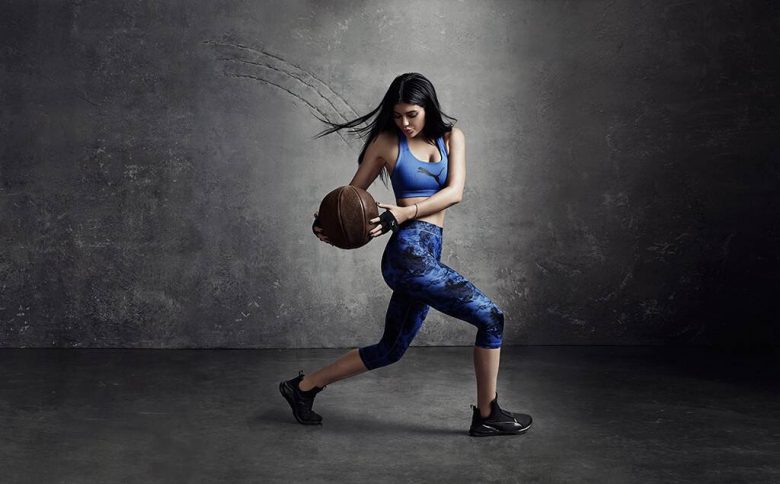
Kylie Jenner endorses Puma 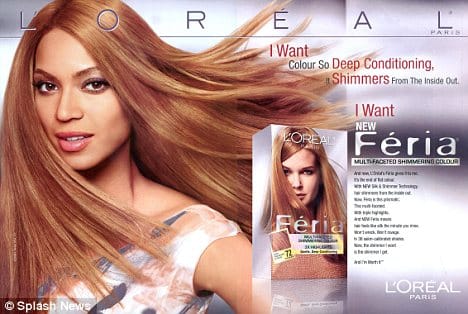
Beyonce endorses L’Oreal 
Colin Kaepernick endorses Nike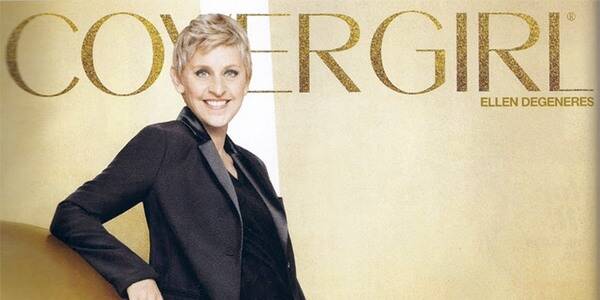
Ellen Degeneres endorses Cover Girl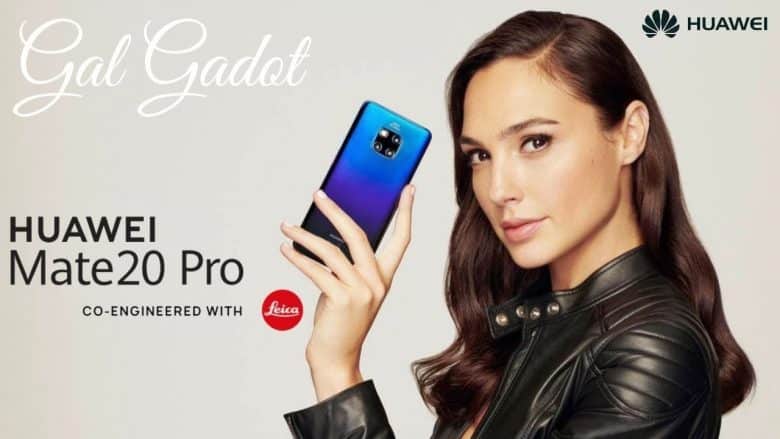
Gal Gadot endorses Huawei 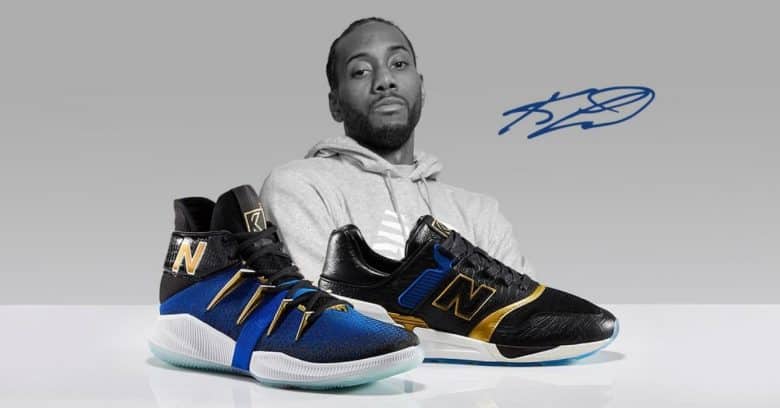
Kawhi Leonard endorses New Balance 
Michael Jordan endorses Nike 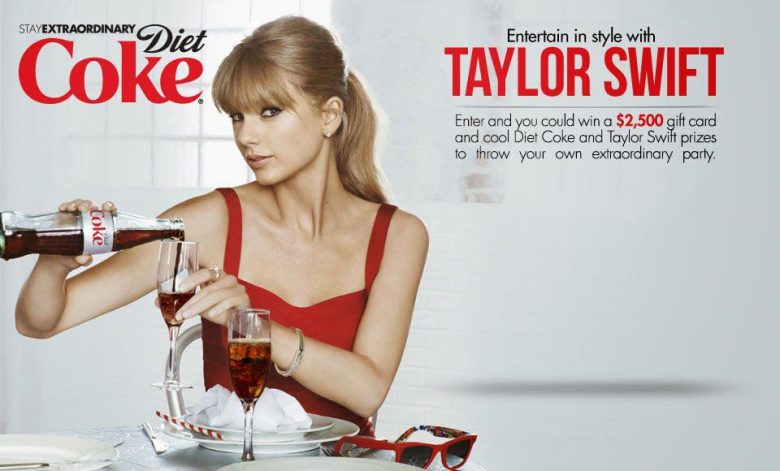
Taylor Swift endorses Diet Coke
Why do companies use celebrity endorsements?
Big brands use celebrity endorsements because it both promotes their products and increases a product’s conversion rate (the percentage of people who buy out of the people exposed to a product). More people get to know about the product, and those people are more likely to buy when something is endorsed by someone they respect.
Celebrity endorsements make a product more memorable. A forgettable product is made noteworthy when you attach a well-known face to it. Our brains are tuned to pick out and remember people’s faces easily.
Celebrities can also make an unfamiliar product more approachable with their endorsement. We are familiar with stars; we see them on TV, read about them in articles, and follow them on social media. That frequency of contact makes them feel familiar, even if we have never met them.
The familiarity of a celebrity transfers to make a product more familiar and less intimidated. This effect is particularly useful for new products or existing products entering a new market.

For example, Huawei relies on the endorsements of celebrities like Gal Gadot and Henry Cavill. Huawei has a unique challenge given its Chinese sounding name and the fact that it is relatively new to western consumers relative to other smartphone manufacturers like Apple, Google, Samsung, and Sony. Their use of well-known celebrities in their advertisements makes them seem less intimidating because of a phenomenon called cognitive easing (a point well established on the Tech Altar YouTube channel.)
Cognitive ease is our brain’s tendency not to question things that we are exposed to often; in other words, things that we are familiar with. We approach unfamiliar things with skepticism and doubt. But add a familiar celebrity in there, and we approach a product with far less reservation.
Now, in the social media era, celebrities have channels to customers that marketers can pass messages through… for the right price, of course.
Until recently, our contact with stars was mediated by a media company that wanted marketers to advertise against the celebrities program. For example, a Dr. Phil fan would watch CBS, a television channel.
Now, Dr. Phil and most celebrities have social media followings that add value to the brands they endorse. Marketers value the additional reach that comes with public figures that have large social media followings.
Are celebrity endorsements effective?
Yes, celebrity endorsements have been proven to be an effective marketing tactic.
That result is a little a little perplexing. We have people who sometimes have no specialized knowledge about something recommending the products for that thing. It is also an open secret that celebrity recommendations have more to do with the dollars in a contract than the effectiveness of the product.
So it is fair to ask: do celebrity endorsements increase sales and brand equity?
A study out of the Harvard Business School proved that they do, at least in the sports and athletics industry. The study called “The Economic Value of Celebrity Endorsements” was performed by Anita Elberse, a professor at Harvard, and Jeroen Verleun, then an analyst for Barclays.
“[W]e find validation for the use of celebrity endorsers as an advertising strategy: a firm’s decision to enlist an athlete endorser generally has a positive pay-off in brand-level sales – in an absolute sense and relative to the firm’s competitors – and increases the firm’s stock returns.”
The Economic Value of Celebrity Endorsements by Anita Elberse and Jeroen Verleun
Elberse and Verleun studied the effect of endorsements on both sales and stock prices of 51 publically traded companies that sell sports and athletic products. They used data from Nielson’s Homescan panel for sales data. They compared the sales of brands that had endorsements with comparable brands that did not have endorsements.
They found that an endorsement did increase sales by about 4%.
It is important to note that most brands, 43 of the 51, saw a positive effect from their endorsements. But a few received no sales growth from their endorsements, and some brands lost sales!
So celebrity endorsements work when they are done smartly. The celebrity’s brand must match up with both the advertiser brand and the values of the market.
If the endorsement comes from an athlete, then it is also important that they win! The study found better returns for the advertising brand when the endorser performs well in his or her sport.
Do celebrity endorsements raise a brands sales, or a product categories sales?
Celebrities have the power to bring attention to a product that people would otherwise ignore. But does that new attention help the brand who paid for the endorsement, or does it increase the sales of all brands in the category?
When Kate Hudson models Fabletics athleisure wear on her Instagram account, does she increase demand for Fabletics or athleisure products in general?

It is an essential question because for the expensive endorsement contracts to have a return on investment, then the benefit needs to go to the brand and not help the competition.
The Harvard study by Elberse and Verleun we referenced earlier proves that most of the benefit goes to the endorsed brand.
“While endorsements improve sales for the focal brands, they do not move the needle for competing brands in the category.”
The Economic Value of Celebrity Endorsements by Anita Elberse and Jeroen Verleun
Paid Endorsements From Organizations
For some reason, paid endorsements from individuals seem credible for customers when paid endorsements from organizations seem hollow and unconvincing. But they are a thing, so I have to acknowledge them.
Note that unpaid endorsements from organizations (like safety associations) are far more powerful, and we cover those later in the article.
Trade Organizations
Explicit endorsements usually come from trade organizations. For example, Oral-B has some toothbrushed that are accepted by the American Dental Association (ADA).
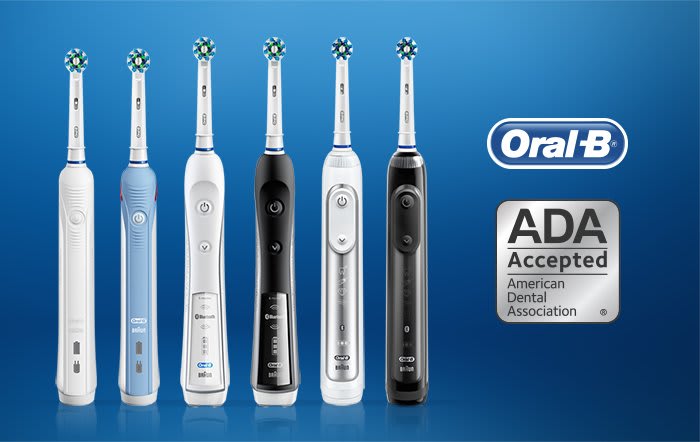
These trade endorsements are not simply pay-for-play. They would not endorse a wantingly deficient product. They do not want to lead customers to bad experiences or ruin the name of their organization. Both the manufacturer and the tradesperson serve the same market, so it would be foolish to ruin their relationship with those customers.
But displaying the seals of approval or logos of the trade association requires a licensing agreement. The designs are the copyright or trademark of the organizations, and they usually make a little money for their organization by renting out the right to display them.
More than money, what trade organizations are looking for is to steer product decisions by the manufacturer. They usually have a list of best practices agreed upon by the members, and they will give their seal of approval to any product design that complies.

For example, the ADA is looking for either multilayer or diagonally cut bristles when they grant a manual toothbrush with the ADA Seal of Acceptance. This guidance come from a scientific study proving the effectiveness of diagonal or multi-layer bristles. The ADA wants to see tooth care products be as effective as possible, rather than be as cheap as possible as the manufacturers would prefer.
Trade organizations rarely exclusively endorse brands like celebrities would. An exclusive endorsement would be the best way to make money but would be against their organizational mission to help out the industry their tradespeople work in.
Charities
Another type of organization that endorses brands is non-profits. In exchange for support, some charities will promote a brand. The promotion can be contingent on a monetary donation or a donation of products.
Usually, sponsorships of charities are purely promotional and do not come with a clear endorsement of a brand’s product. The charity wants to leave the door open for donations from other brands.
But sometimes support does come with an exclusive endorsement. For example, I work with a dog food brand that donates food to shelters, and many of the shelters display a sign saying “We Feed And Recommend” the brand.
Distributors and Retailers
Sometimes the people who bring the product to customers will exclusively sell one brand’s products. Distributors and retailers may sign an exclusivity agreement with one brand. This agreement means that they will not sell any competing brand for an agreed-upon amount of time.
Both the retailer and the exclusive brand market this agreement as an endorsement to customers (“the official product of…”).
But the exclusivity has more to do with business than the effectiveness of the product. In BMB’s investigation of white label products, we found many instances of retailers signing exclusive agreements with manufacturer brands if they would agree to manufacture and distribute their store brand product.
Retailers will also look to brands to split the cost of investments in marketing. A brand will pay some or all of the cost of a piece of signage in stores if they can co-promote their brand on the signage. These co-promotions seem like endorsements to the customer.
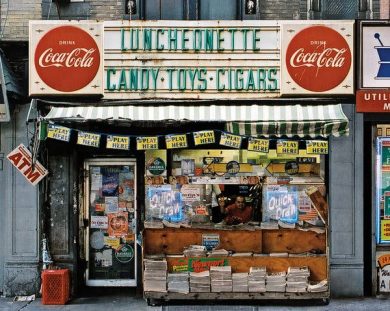
For example, we have many convenience stores here in North America that have their storefront sign with a Coca-Cola. These signs are there because the Coca-Cola Company has paid for their sign in exchange for the permanent promotion of their brand in a place their customers typically purchase.
I have worked with retailers who have custom graphics applied to their front windows, all paid for by a manufacturer whose products they carry. It is a win-win. The store gets a great branded storefront, and the manufacturer brand gets their logo in front of customers as they walk in to purchase.
FTC Regulations for Paid Endorsements

It is essential to understand the legal requirements if you are a brand builder who is looking to pay for endorsements.
I am not a lawyer, and this is not legal advice. If you are marketing in the US, then please read the FTC guidelines for yourself, or have your legal representative read it and counsel you accordingly. If you are outside the US or market outside the US, make sure you follow the regulations of your region.
What is considered by the FTC to be an endorsement?
The FTC considers an endorsement to be any statement from or depiction of a person/organization that would lead viewers think that the endorser believes that this product is the best.
That is an expansive definition, and intentionally so. The FTC is aware that less-than-ethical marketers will exploit endorsements otherwise.
To quote the regulations directly:
“For purposes of this part, an endorsement means any advertising message (including verbal statements, demonstrations, or depictions of the name, signature, likeness or other identifying personal characteristics of an individual or the name or seal of an organization) that consumers are likely to believe reflects the opinions, beliefs, findings, or experiences of a party other than the sponsoring advertiser, even if the views expressed by that party are identical to those of the sponsoring advertiser. The party whose opinions, beliefs, findings, or experience the message appears to reflect will be called the endorser and may be an individual, group, or institution.”
Guides Concerning the Use of Endorsements and Testimonials in Advertising, Federal Trade Commission
A public figure who appears in an advertisement is considered by the FTC to be endorsing that product. Even if the celebrity doesn’t explicitly state their opinion, the viewer of the ad can reasonably infer that the star thinks the product is fantastic. Therefore, the FTC counts as an endorsement.
There is an exception for actors or hosts who read advertising provided copy from the advertiser. For example, an actor playing a character in a skit in a video ad, or a radio or podcast host who reads an ad. The context of the sponsored segment should make clear that the opinions in the ad advertisement does not reflect the personal views of the host, and thus is not an endorsement.
I observe a lot of new media celebrities, hosts of podcasts and YouTube shows in particular, who adlib their ad reads. This is a mistake, as it confuses the viewer between their personal opinion and the opinions of the advertiser. The conflation of opinions creates liability for both the host and the advertiser because it crosses the line into a paid endorsement, which is subject to additional regulations.
In another exception, the FTC does not consider it a paid endorsement if a social media post of a product that someone got for free through a regular consumer discount program. For example, if a person claims a coupon for a free ice cream cone and then raves about the ice cream on social media.
Does the FTC require that paid endorsement reflect the personal opinions of the endorser?
Yes. An endorsement leads people to believe that the endorser likes the product, even if it is an open secret that they are getting paid by the advertiser.
“Endorsements must reflect the honest opinions, findings, beliefs, or experience of the endorser.”
Guides Concerning the Use of Endorsements and Testimonials in Advertising, Federal Trade Commission

So we have to assume that Christiano Ronaldo just loves fried chicken when he endorses KFC. It seems ridiculous to me.
Marketers cannot put words in the endorser’s mouth. Marketers are not required to repeat the words of endorsement from the public figure verbatim. But marketers have to make a good faith effort to maintain the meaning, so it still reflects the beliefs of the endorser.
Marketers are legally required to make sure that the endorsement matches the current view of the public figure before re-using it on pieces of marketing. Marketers have to check-in with the endorser regularly, and if new information has come to light regarding the effectiveness of the product or a competitor’s products.
For example: if an athlete endorses a protein powder and the company reformulates their product for any reason, then the company needs to reach out to the athlete and have them express their endorsement of the reformulated product. This is the case even if the new product is objectively better in every way.
An endorser not only has the right to change their mind, but they might also have a legal requirement to retract their endorsement if the product is found to be faulty, dangerous, or misleading. The endorser is legally liable if they continue to recommend a product after a piece of information has come out that points to the product being unsafe.
FTCs own example of this:
“An ad for an acne treatment features a dermatologist who claims that the product is “clinically proven” to work. Before giving the endorsement, she received a write-up of the clinical study in question, which indicates flaws in the design and conduct of the study that are so serious that they preclude any conclusions about the efficacy of the product. The dermatologist is subject to liability for the false statements she made in the advertisement.”
Guides Concerning the Use of Endorsements and Testimonials in Advertising, Federal Trade Commission
Does the FTC care whether the endorser is a regular user of the product?
If the advertising or the wording of the endorsement states or implies that the public figure uses the product, then they must continue using the product as long as the endorsement is being actively marketed.
If an ad makes it look like the endorser is a regular user, and the endorser stops using the product, then no marketing can feature the endorser anymore.
For example, Jennifer Aniston told People Magazine that she was a user of Aveeno moisturizer before and after she was signed as their brand ambassador. She has been using their products since her mother recommended it to her at fifteen. If that ever changed, then Aveeno would need to pull their advertisements featuring her.
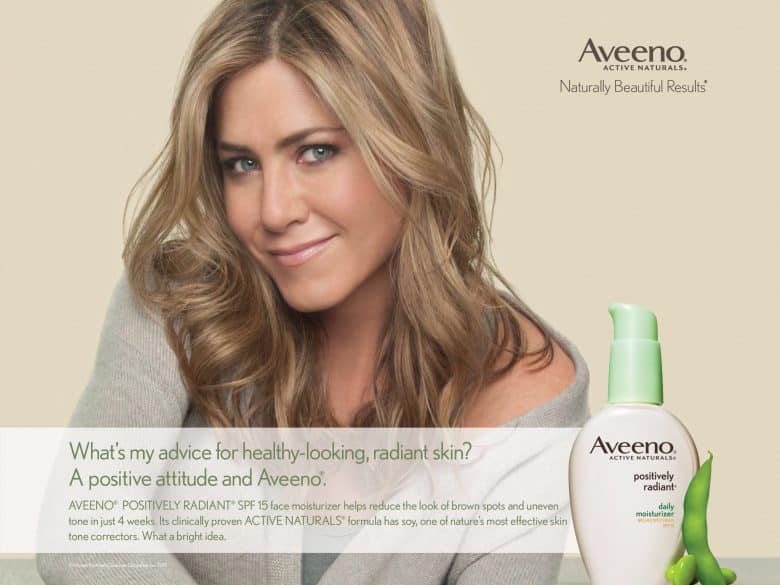
What does the FTC do if the endorser overstates the benefits of the product?
The FTC holds both the advertiser and endorser to only state provable claims about the effectiveness and features of the product. The endorser can’t say anything that the advertiser brand can’t say directly.
The FTC is trying to make sure that advertisers and manufacturers are not trying to get around the rules of their industry by using an endorser as a cutout. Anything a paid endorser says has the same legal requirements as if the company said it directly.
For example, if a soccer star said his Nike cleats made him run faster in a post-game interview, and that has not been proven to be the case, then they need to retract the statement. If the statement is digital, then they need to go back and ask the media company to pull down the post or amend it.
Many marketers and PR professionals send free products out to a network of bloggers, journalists, and media personalities. As we learned, the FTC considers the complimentary product in exchange for reviews to be a paid endorsement. Thus, the marketers and PR people are legally required to follow up with the people they sent a product to and make sure that they did not make any embellished or misleading statements in the course of their endorsement. If they did, then the marketers and PR people need to make every attempt to have the endorser amend the post where they made the over-the-top endorsement.
Do endorsers need to state their financial relationship with the advertiser?
Yes. There needs to be a line everywhere there is a statement that is the result of a paid endorsement.
The nature of people’s reaction to a statement changes if they know that the person is getting paid for the endorsement. Some people may not take an endorsement seriously if they know it is paid. The FTC wants to make sure that these people know a paid endorsement from an unpaid endorsement so that people can make up their minds accordingly.
The moniker #ad has taken off as the symbol of a paid endorsement, but the FTC warns that it alone is not sufficient. A social media influencer needs to state, in no uncertain terms, that they are paid for their words and post.
The FTC considers both the advertiser and endorser responsible for making sure the financial relationship statement is there.
I have to make sure that I comply with this. I am, from time to time, sent business books for free in exchange for reviews on BMB: Brand Marketing Blog. I also provide links to books and products on Amazon that I can get an affiliate commission from. In both cases, I have to make sure that I state in my posts the nature of my relationship with the seller. People can take it or leave it, but at least they are informed.
Unpaid Endorsements
Every successful brand experiences the positive effect of endorsement, but only a small fraction of companies every pay for endorsements. So the majority power of endorsements comes from unpaid endorsements.
If a brand aligns with people’s values, then they will proudly display themselves using the brand’s product. If a product is exceptionally useful or surprisingly delightful, then the product’s users will positively review it.
Unpaid endorsements can be both explicit and implicit.
Explicit endorsements are when a person or organization unambiguously speaks to the positive traits of a brand or product in public.
Examples of explicit endorsements that are unpaid are:
- Five-star reviews on an Amazon product page.
- A glowing post about a product on Facebook.
- Five-star reviews of a business on Google Maps.
- Sharing a piece of media on Twitter.
- A plumber urging his customers to buy a specific brand of faucet.
Implicit endorsements are when a person or organization display their use of a product, which can be interpreted as an endorsement by passers-by.
Examples of implicit endorsements are:
- Someone wearing clothing that displays a brand’s logo.
- A shopper bringing home their products in a bag that has the store logo.
- A celebrity driving a brand of car.
- Public criticism of a political candidate while not criticizing the other side.
- A brand’s fan sticking a logo of the brand on their car’s bumper.
- A sports team whose uniform displays the logo of an apparel manufacturer.
- An eCommerce platform that orders search results by “Featured” by default.
- The number one result in a Google SERP.
- A public figure speaking at a fundraising event.
- A retailer displaying the logos of the brands that they sell on their windows or signs.
- Co-branded products.
- A speaker at an event whose laptop shows it’s logo to the audience.
Not every product that we use we would endorse. So often, people give more credit to the brand than is deserved. But the social proof of seeing a trusted person using a product is a powerful influence on our purchasing behavior.
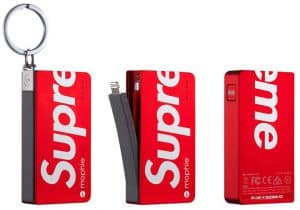
Supreme is a brand that has benefitted from the power of unpaid implicit endorsements. Supreme crossed a tipping point where it was considered “cool.” After that, showy influencers started to wear Supreme’s merchandise to help reinforce their relevancy. After that, the brand saw explosive growth.
Unpaid endorsements from friends, family and community leaders
When we think about endorsements, we imagine the one significant endorsement that will sell millions of dollars worth of product. But the real power of endorsements comes from lots of small endorsements.
Friends, family, everyday experts, and community leaders can have far more influence on the purchases of individual people in their circle than a celebrity does for one of their fans. People closer to us talk to our particular needs, and not in generalities.
Here are some examples of unpaid community endorsements:
- A colleague who wants you to buy a FitBit so you can see each other’s progress.
- A plumber who only uses Moen faucets.
- That fashionable friend who has a Prada bag.
- A pastor who calls out a local business for their support of the church community.
- A union which endorses a political candidate.
Advertising platforms understand the power of endorsements from people close to the person being marketed to. If they can, Google and Facebook will show the viewer endorsements from people within their network. The ability to pull who-you-know into marketing is part of the reason why social media advertising is valued so much more than ads in traditional media.
Google Ads has a featured called Shared Endorsements. For the feature to kick in, someone if viewing an ad and someone in their network has positively reviewed that product or brand. If that is the case, then the name of the person, the star rating of the review, and the first few words of the review will be displayed below the ad. This social proof makes the ad much more effective and builds an affinity towards the brand.
If Google using your name to help market their advertisers seems creepy to you, then you can opt-out of shared endorsements.
Editors note for readers: I am unclear whether this feature is still available for advertisers. Can someone confirm or deny? Please comment below or contact us.
Facebook uses friend recommendations all over the place. When you are looking at a potential friend, they show all the friends you both have in common. Promotion for any Facebook Groups and Facebook Pages highlight other people in your network who have joined already. And Local in the Facebook App, the product that competes with Google My Business, shows reviews from connections before reviews from the general public. You need to make sure your location information is filled out on your Facebook Page to show up in Local in the Facebook App.
Unpaid Endorsements from Organizations
As we discussed earlier, people are quite cynical when it comes to paid endorsements from groups. But unpaid endorsements are quite powerful.
Conscientious consumers look for the seals of approval of non-profit organizations. For example, the Insurance Institute for Highway Safety (IIHS) publishes their Top Safety Picks for vehicles in every segment. Often the brands of the vehicles that are picked display the IIHS Top Safety Pick prominently in their advertising, like the Hyundai example here.
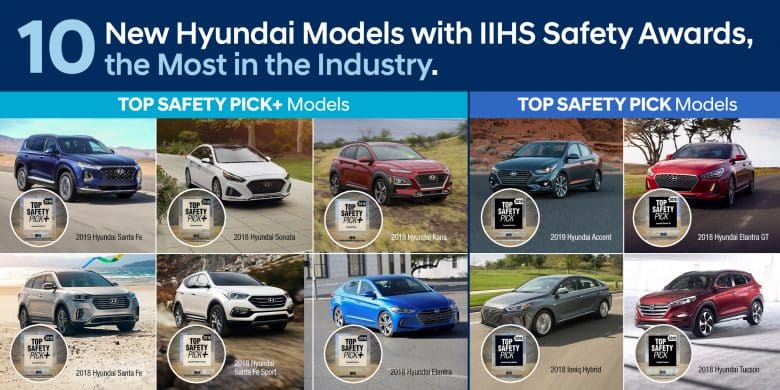
The other significant source of unpaid endorsements are reviews from media outlets. For example, Oprah’s Favorite Things is a list of products that are published by the Oprah Magazine every year before the holiday season. The list is not pay-to-play but does have very structured requirements laid out by Oprah and her producers.
Endorsements also come from aggregated lists, like “top sellers” or “highly critically reviewed,” that are certified by media outlets.
For example:
- Authors, publishers, and public relations companies work very hard to get a book onto the New York Times Bestsellers List because that distinction is so worthwhile.
- Video game publishers show off when their games get a 4+ star rating on IGN, an aggregate review from many game journalists.
- Movie distributors love showing off their score on Rotten Tomatoes, which is also a review aggregator of both critics and regular moviegoers.
Unpaid Endorsements in Business-to-Business (B2B)
One of the most powerful applications of endorsements is in B2B. The page in a sales deck that shows the list of existing clients is usually the most convincing slide. Decision makers often go on to a company’s website or LinkedIn page to see if similar professionals have endorsed the service provider.

We like to delude ourselves into thinking that the business buying process is more rational than consumer purchase decisions. But really, business buying decisions are made emotionally, and then back filled with rationality. People make a gut decision, and then come up with all sort of reasons why it is the most rational choice.
Endorsements serve both as an emotional trigger to buy as well as provide a rational reason that a purchaser can take back to their boss or board.
People want to feel safe when making a large business purchase decision. “Nobody got fired for buying IBM” was an unofficial tag line of big blue in the 1980s. Being perceived as the safe choice was why they were so dominant for so long in the enterprise computer market.
Seeing a strong client list and endorsement makes B2B buyer feel safe because others have taken the risk before them, and are doing well. It is social proof.
Both a client list and some personal endorsements help people sell a B2B purchase within the organization. The easiest pitch for an internal person to make to their colleagues is: “everyone else is doing it.” From HR systems to cloud storage, the internal decision comes more quickly and easily if stakeholders can see that a competitor has made the move already.
How do you get endorsements for your business product or service? You ask your clients.
The best time to ask is when you receive a glowing piece of feedback from a client. You should ask if you can put that statement, or something slightly reworded on your website.
But don’t wait for clients to offer up an endorsement; they rarely will. A simple email saying: “We are tuning up our website and sales material and a positive statement from you about our work would really help us out. Would you mind sending me one?”
A lot of account managers do not solicit reviews because they worry that the client will come back saying that they don’t actually like working with the company. But that never actually happens.
The worst case scenario I have ever experienced is someone saying: “sure, but can you leave my name off of it.” I have also received back: “No problem. Write whatever you want and put my name on it.” These type of responses can be a bit demoralizing but are far from catastrophic.
More than half the time I have asked for endorsements, I have received genuinely touching ones back. And that is helpful both for endorsed marketing and personal validation.
Conclusion. Endorsements are powerful, but you should seek them out thoughtfully.
Endorsements are powerful influences on people. Seeing people that we respect, both people close to us and public figures, endorse a product will make us more likely to buy that product in the future. We are social creatures, and endorsements will always play to our human nature.
Every brand needs endorsements, and every brand builder needs to encourage people to speak positively and publically about a brand’s product and the brand themselves. Every brand needs to solicit and encourage unpaid endorsements by following up with people they know to use their products. Paid endorsements are trickier, but make sense for more brands than currently consider them.
But there are regulations and liabilities associated with paid endorsements. There is nothing overly tricky; you can read the entirety of the FTC’s guidance in a couple of hours, as I did. The most important thing to keep in mind is that the brand and paid endorser are legally tied together; both are on the hook if the other makes misleading statements or they are omitting things that are required in their industry. So only work with endorsers who are reliable and professional.

Leave a Reply to Colin Finkle Cancel reply